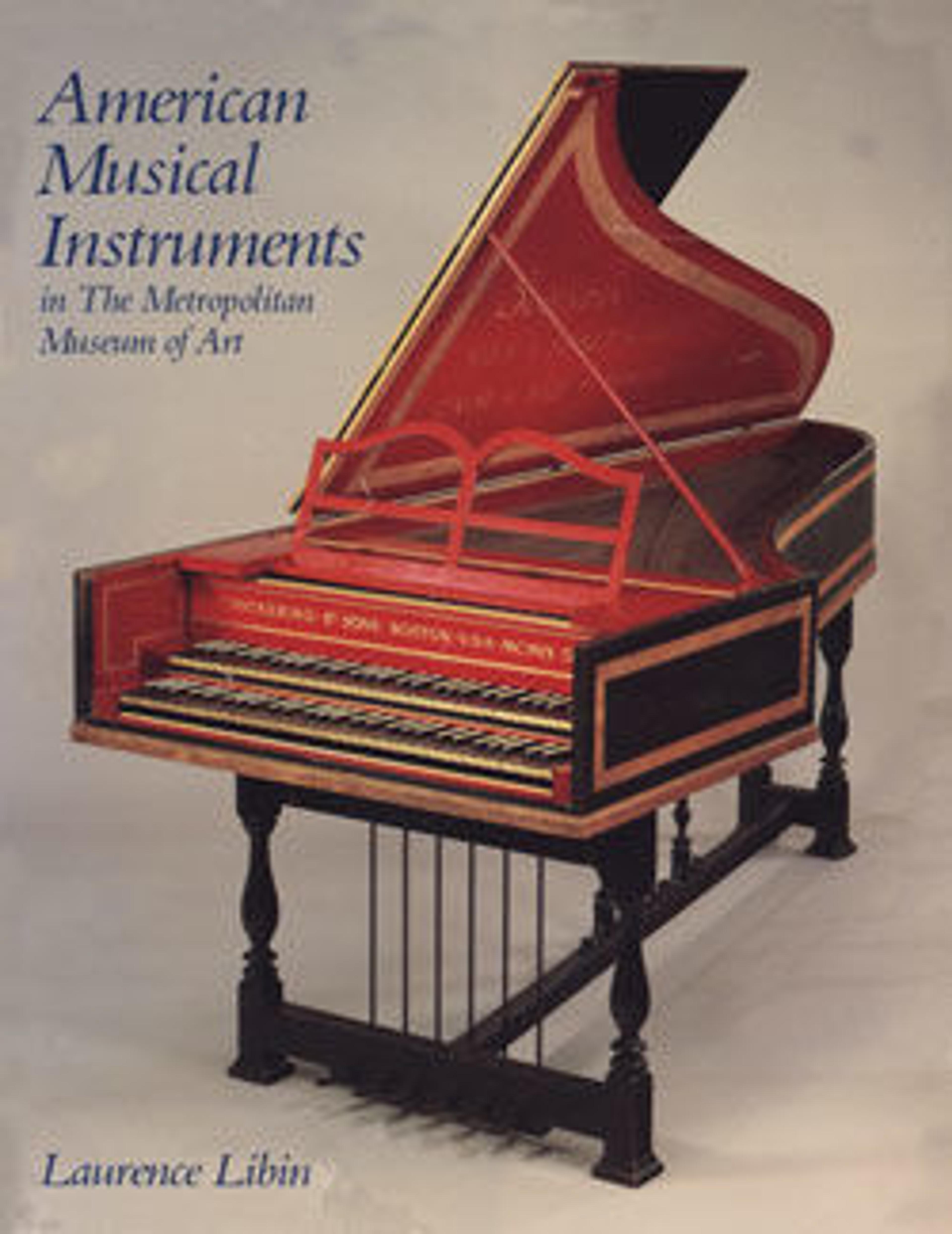Square Piano
Benjamin Crehore may have been the first native born American maker of pianos and was the earliest New England piano maker that is known. This square piano is one of six pianos documented by this maker.
Technical description:
Rectangular mahogany and rosewood veneered case with bird's eye maple veneer on nameboard, with floral design and with fretwork on either end; on square tapered mahogany-veneer legs with inlaid borders; compass FF-c4 (68 keys), ivory naturals with molded fronts, ebony slips over black-stained accidental blocks; damper pedal implied by hole in case bottom (pedal missing); legs tenoned to frame of independent stand; English double action, intermediate lever with single escapement; wires passing through wood plate adjacent to hitchpin rail carry felt-lined wood damper blocks; unpierced tuning pins; double-strung throughout, lowest eight notes wound.
Technical description:
Rectangular mahogany and rosewood veneered case with bird's eye maple veneer on nameboard, with floral design and with fretwork on either end; on square tapered mahogany-veneer legs with inlaid borders; compass FF-c4 (68 keys), ivory naturals with molded fronts, ebony slips over black-stained accidental blocks; damper pedal implied by hole in case bottom (pedal missing); legs tenoned to frame of independent stand; English double action, intermediate lever with single escapement; wires passing through wood plate adjacent to hitchpin rail carry felt-lined wood damper blocks; unpierced tuning pins; double-strung throughout, lowest eight notes wound.
Artwork Details
- Title: Square Piano
- Maker: Benjamin Crehore (American, Milton, Massachusetts 1765–1831 Milton, Massachusetts)
- Date: ca. 1800–1810
- Geography: Milton, Massachusetts, United States
- Culture: North American, Massachusetts
- Medium: Mahogany, rosewood, pine, maple, iron, brass, ivory, ebony, various materials.
- Dimensions: Instr. 170cm x 59.5cm x 23.5cm
*Stand is in pieces - Classification: Chordophone-Zither-struck-piano
- Credit Line: The Crosby Brown Collection of Musical Instruments, 1889
- Object Number: 89.4.2858
- Curatorial Department: Musical Instruments
More Artwork
Research Resources
The Met provides unparalleled resources for research and welcomes an international community of students and scholars. The Met's Open Access API is where creators and researchers can connect to the The Met collection. Open Access data and public domain images are available for unrestricted commercial and noncommercial use without permission or fee.
To request images under copyright and other restrictions, please use this Image Request form.
Feedback
We continue to research and examine historical and cultural context for objects in The Met collection. If you have comments or questions about this object record, please complete and submit this form. The Museum looks forward to receiving your comments.
